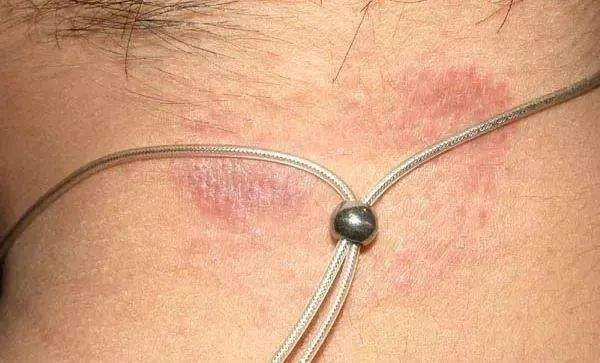Jewelry is often seen as a symbol of beauty and elegance, but for some people, wearing jewelry can lead to uncomfortable and irritating allergic reactions. Jewelry allergy, also known as contact dermatitis, is a common condition that affects many individuals. In this comprehensive guide, we will explore the causes, symptoms, and prevention measures of jewelry allergy, and provide useful tips to keep your skin healthy and irritation-free.
Common Metals that Can Cause Jewelry Allergies
Jewelry allergy is typically caused by an allergic reaction to certain metals found in jewelry. The most common metals that can trigger an allergic reaction include nickel, cobalt, and chromium. These metals are often used in the production of jewelry, as they are inexpensive and can provide durability and shine to the finished product. However, they can also cause skin irritation and allergic reactions in susceptible individuals.
Nickel
Nickel is one of the most common causes of jewelry allergies. It is often used as a base metal in many types of jewelry, including earrings, necklaces, bracelets, and rings. Nickel can cause a variety of allergic reactions, ranging from mild redness and itching to severe skin rashes and blisters.
Cobalt
Cobalt is another metal that can cause jewelry allergies. It is often used as an alloy in white gold and can also be found in some other types of jewelry. Cobalt allergies can cause similar symptoms as nickel allergies, including redness, itching, rash, and inflammation.
Chromium
Chromium is a metal that is often used in the production of stainless steel jewelry. Some individuals may develop an allergic reaction to chromium, resulting in symptoms such as skin redness, itching, and rash.
Symptoms of Jewelry Allergy
The symptoms of jewelry allergies can vary from mild to severe and may include:
Redness and inflammation
The affected area of the skin may become red, swollen, and inflamed.
Itching and rash
The skin may itch and develop a rash, which can be raised, bumpy, or blistered.
Pain and discomfort
Some individuals may experience pain, discomfort, or a burning sensation in the affected area.
Skin discoloration
In some cases, the skin may develop darkening or discoloration, especially with copper or brass allergies.
These symptoms may occur immediately after wearing jewelry or may develop over time with prolonged exposure to the metal causing the allergic reaction. In severe cases, jewelry allergy can cause skin to become cracked, blistered, or even bleed.
Prevention of Jewelry Allergy:
If you suspect that you may have a jewelry allergy, there are several preventive measures you can take to minimize your risk of developing an allergic reaction. These include:
Choose jewelry made of hypoallergenic metals
Look for jewelry that is made of hypoallergenic metals, such as surgical stainless steel, titanium, niobium, or platinum. These metals are less likely to cause allergic reactions and are considered safe for most individuals.
Avoid jewelry containing nickel, cobalt, or chromium
If you are allergic to nickel, cobalt, or chromium, avoid wearing jewelry made of these metals. Be cautious when purchasing jewelry, especially inexpensive pieces, as they may contain high levels of these allergenic metals.
Opt for jewelry with a protective coating
Some jewelry, especially earrings, may come with a protective coating, such as rhodium plating, which can prevent direct contact between the metal and your skin. This can reduce the risk of developing an allergic reaction.
Keep your jewelry clean and dry
Clean your jewelry regularly and dry it thoroughly after cleaning or when it gets wet. Moisture can cause metals to oxidize, which may increase the risk of developing an allergic reaction.
Avoid wearing jewelry for long periods of time
Prolonged exposure to jewelry, especially earrings or rings, can increase the risk of developing an allergic reaction. Take breaks from wearing jewelry, especially when you are sleeping or engaging in activities that may cause sweating.
Test your jewelry before wearing it
If you are unsure about the metal content of your jewelry, you can perform a patch test to check for any allergic reactions. Apply a small amount of the jewelry to a small area of your skin, such as the inner part of your wrist, and leave it for 24 hours. If you develop any redness, itching, or rash, avoid wearing that jewelry.
Keep your skin clean and moisturized
Keeping your skin clean and moisturized can create a barrier between your skin and the jewelry, reducing the risk of direct contact and potential allergic reactions. Use mild, hypoallergenic soaps and moisturizers that are suitable for your skin type.
Avoid Sharing Jewelry
Sharing jewelry with others can increase the risk of spreading bacteria and allergens. Avoid borrowing or lending jewelry, especially earrings or other body piercings, to minimize the risk of jewelry allergies.
Consider alternative jewelry options
If you have a known jewelry allergy or have experienced allergic reactions in the past, consider alternative jewelry options such as plastic, wood, or fabric jewelry, which are less likely to cause allergic reactions.
Seek Professional Advice
If you experience persistent symptoms of jewelry allergies, such as persistent rash, itching, or swelling, seek professional advice from a dermatologist or an allergist. They can provide you with personalized recommendations and treatment options to manage your jewelry allergies effectively.
Alternative Materials for Jewelry
If you have experienced jewelry allergies in the past, you may consider switching to alternative materials that are less likely to trigger allergic reactions. Here are some options:
Hypoallergenic metals
Look for jewelry made from hypoallergenic metals such as surgical stainless steel, titanium, or niobium. These metals are less likely to cause allergic reactions and are often used in medical implants due to their biocompatibility.
Sterling silver
Sterling silver is a popular option for jewelry, as it contains a lower percentage of alloys compared to other metals. Look for sterling silver jewelry that is stamped with a “925” mark, indicating that it contains 92.5% silver and is less likely to cause allergic reactions.
Platinum
Platinum is a precious metal that is known for its durability and hypoallergenic properties. Although it can be more expensive than other metals, platinum jewelry is a great option for those with sensitive skin.
Plastic or wooden jewelry
Jewelry made from plastic or wooden materials can be a stylish and hypoallergenic alternative for those with metal allergies. These materials are typically lightweight and comfortable to wear, and they are less likely to cause skin irritations.
Fabric or leather jewelry
Fabric or leather jewelry, such as fabric bands or leather cords, can be a trendy and allergy-free option for those who want to avoid metal jewelry altogether. These materials are soft and gentle on the skin, making them a comfortable choice for everyday wear.
In conclusion, jewelry allergy is a common condition that can cause discomfort and irritation. However, by taking preventive measures such as choosing hypoallergenic metals, avoiding metals known to cause allergies, keeping jewelry clean and dry, taking breaks from wearing jewelry, and keeping the skin clean and moisturized, you can reduce the risk of developing an allergic reaction. If you suspect that you have a jewelry allergy or experience persistent symptoms, it is recommended to seek professional medical advice. Remember to always prioritize your skin health and well-being when it comes to wearing jewelry.









